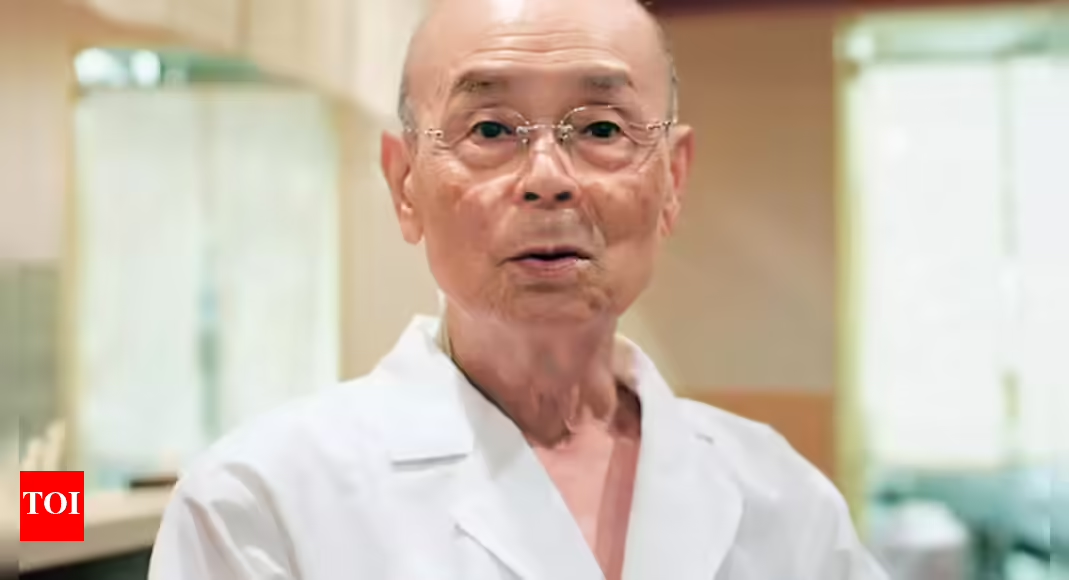Jiro Ono turns 100 and is not ready to retire: 5 longevity hacks to learn from Japan’s sushi legend

It’s the bracket of 60-65: most people consider this age bracket as the retirement age. You reduce your workload, and you religiously allot time to relax more — but not Jiro Ono!The Japanese sushi legend has reached the milestone of 100, and he still has no plan to retire!At an age when many are easing into retirement and looking forward to quiet days, Japan’s sushi legend has other plans. Turning 100 this year, Jiro Ono — founder of the celebrated Tokyo restaurant Sukiyabashi Jiro and the center of attention of the acclaimed documentary Jiro Dreams of Sushi — insists he is not ready to stop working.His secret?A life built around craftsmanship, discipline, and purpose.Care to know in detail? Read on.
Craftsmanship, commitment, purpose
One of the standout features of Ono’s life is his continuing dedication. Even at 100, he states — as reportedly by AP News — that “the best medicine is to work.” After beginning his apprenticeship at the age of 7, Ono opened his own restaurant in 1965, when he was 40. And even after decades of craftsmanship and service, Ono is far from even the thought of retiring. In fact, rather than viewing retirement as the goal, he treats each day as an opportunity to refine his craft. This “purposeful engagement” — having meaningful work or activity — is considered key to improved mental health, sharper cognition, and longer and healthier life. For many of us, this doesn’t mean staying at a job we dislike — but finding something we care about that keeps us engaged and following Ono’s example: keep going, keep curious, keep connected.
Move regularly and keep it simple
Ono emphasizes the importance of walking daily. As reported by AP News, he still goes to work when he can, takes regular walks, eats simply, and avoids alcohol. Ono doesn’t talk about high-intensity workouts; rather, consistent and moderate movement seems to be his rhythm. Studies show that regular walking, especially in older age, supports cardiovascular health, mood, and bone strength, and helps maintain mobility. For longevity, it’s not always about gym equipment — simple yet consistent movement matters a great deal. Adopting regular walks, maybe after meals or a short stroll each day, can be an easily included, yet impactful habit. Ono’s long life is a testament to how a simple habit becomes part of a life lived long and full.
Eat with intention and moderation
Longevity literature often highlights diet, and Ono’s life reflects the same. He eats well, avoids excessive alcohol, and focuses on ingredients and preparation rather than indulgence. His sushi-making emphasizes quality, precision, balance — qualities that also apply to eating. For us, the lesson is: prioritize whole and fresh foods, avoid over-processing or over-consumption, pay attention to what you eat, how you eat, and when you eat. In many long-life populations (Blue Zones like Okinawa or Sardinia), moderate eating combined with nutrient-dense choices correlates with better health outcomes. Ono’s discipline in his craft translates into discipline in his daily diet.
Lifelong learning and craftsmanship
While reflecting on his craft of making sushi, Ono once said in the documentary Jiro Dreams of Sushi, “I haven’t reached perfection yet.” Even decades into his career, he sees himself as a learner, ever so keen to learn to be better. Lifelong learning is another hallmark of longevity research: engaging mentally, trying new things, and challenging your skills helps keep the brain resilient and delays cognitive decline. Ono’s mastery isn’t static — he keeps refining, adjusting, mastering new ingredients, new techniques. For everyday life, the takeaway is this: find a skill you’re passionate about — it might be a hobby, craft, language, volunteering, or anything that stretches you — cultivate it, keep the curiosity alive, and always stay open to improvement..
Humility, connection, and culture
Despite his worldwide acclaim, Ono remains described as “humble, kind,” one who views his work as nothing beyond “service.” In the case of longevity, as much as a healthy lifestyle counts, community building, cultivating meaningful relationships, and cultural anchoring also matter a great deal. People who live long often have strong social ties, meaningful roles in family or community, and a sense of belonging. These social dimensions support mental health, reduce isolation, and add richness to life. Ono’s restaurant reflects the same value — it may be elite, but his ethos, his dedication to craft and respect for tradition, reflects deep cultural roots.Turning 100 and still being enthusiastic about staying active isn’t something to take lightly — it takes years of healthy habits to amount to this! Jiro Ono doesn’t just symbolize longevity — he illustrates a blueprint for a long, engaged life. And yet, that blueprint isn’t an extremely difficult path to follow — rather, consistency is the key.His five habits — purposeful work, regular movement, mindful eating, lifelong learning, and cultivating connection and humility — are simple yet profound. As we reflect on aging in our own lives, these practices remind us that the goal isn’t just more years — it’s more life in those years.





